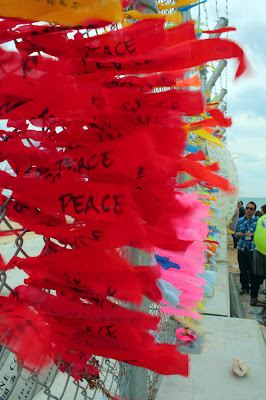Resistance in Okinawa
The_Target_Village by LemmyCautionTK Please watch this video above. It is subtitled and discusses Okinawan resistance to US bases there, most recently protests about the use of the Osprey in the northern forests. I will be heading back to Okinawa in March for another study and solidarity tour. I'll be speaking at a Island Language symposium at Ryuku University and visiting programs dedicated to revitalizing the Okinawan language. I'll also be meeting again with anti-base and independence advocates there. I'm also hoping to see more of the museums and cultural areas while I was there. During my last trip I was limited in terms of what I could see because my schedule was so packed. This time I'm hoping there will be more room to negotiate. For those who want to see my thoughts on my previous two trips to Okinawan please check out the links below: Occupied Okinawa : My trip in May 2012. Okinawa Dreams : My trip in November 2011.












